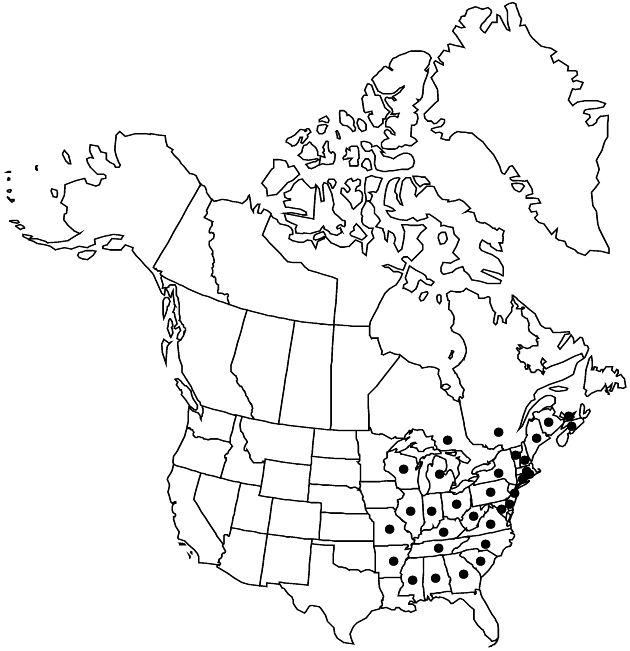Difference between revisions of "Solidago bicolor"
Syst. Nat. ed. 12, 2: 556. 1767.
Mant. 1: 114. 1767.
FNA>Volume Importer |
FNA>Volume Importer |
(No difference)
| |
Revision as of 18:42, 24 September 2019
Plants 20–100 cm; caudices branching. Stems 1(–5), erect, usually branching only in array, moderately to densely hispido-villous. Leaves: basal and proximal cauline tapering to winged petioles, blades oblanceolate to ovate, 35–210 × 15–50 mm, margins serrate or crenate, apices acute, sparsely to moderately soft hispido-villous, more densely so on abaxial nerves; rosettes on rhizome branches sometimes present at flowering; mid and distal cauline sessile, blades elliptic, 15–50 × 5–15 mm, distally reduced, margins entire. Heads 12–270 (1–15 per branch) in usually wand-shaped paniculiform arrays, of short axillary and terminal racemiform, non-secund clusters, sometimes proximal branches elongated, ascending and bearing short axillary and terminal racemiform clusters. Peduncles 1.5–2.5 mm, hispido-villous to canescent. Involucres campanulate, 3–5 mm. Phyllaries in 3–4 series, appressed, strongly unequal, oblong, margins white, scarious, apices obtuse to rounded. Ray florets 7–9 (white); laminae 3.5–4 × 1–1.5 mm. Disc florets 9–12; corollas 3–4 mm, lobes 0.6–1.2 mm. Cypselae (narrowly obconic) 1.5–2.5 mm, smooth or with 5–8 narrow, darker, sunken striations, glabrous or sparsely strigose; pappi 2.5–3.5 mm (sometimes strongly clavate). 2n =18.
Phenology: Flowering Aug–Oct.
Habitat: Sandy and clay soils, dry open woods, rocky slopes, disturbed soils
Elevation: 0–1000+ m
Distribution

N.B., N.S., Ont., P.E.I., Que., Ala., Ark., Conn., Del., Ga., Ill., Ind., Ky., Maine, Md., Mass., Mich., Miss., Mo., N.H., N.J., N.Y., N.C., Ohio, Pa., R.I., S.C., Tenn., Vt., Va., W.Va., Wis.
Discussion
Selected References
None.